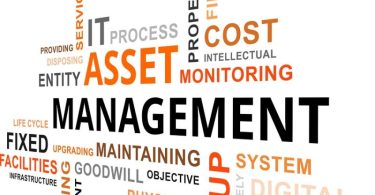The purpose of both a presentation and a report is to convey information, but their structure, manner, and delivery methods differ significantly. A report is typically a detailed, exhaustive document written formally and structured. Typically, it provides information, analysis, or research findings on a particular subject. Typically, reports have a well-defined structure, with sections such as introduction, methodology, findings, conclusions, and recommendations. Reports are intended for in-depth reading, are frequently used for record-keeping, and serve as the premise for making decisions.
Conversely, a presentation is a more dynamic and interactive form of communication that is typically delivered verbally with visual aids such as slides. The objective is to captivate an audience, clarify complex topics, or persuade listeners to adopt a particular viewpoint. Typically, presentations are concise, focused, and designed to be readily comprehended in a short amount of time. Presentations emphasize precise, engaging communication and powerful visuals. Briefly, whereas a report presents an in-depth study of a topic in a structured written format, a presentation communicates critical ideas from a topic verbally, frequently with the aid of visual elements, to effectively engage the audience.
What is a Presentation?
A presentation is a way to get knowledge or ideas across to people. It’s an interactive medium that often uses direct speech and visual tools, like slides or props, to keep the audience interested and make things easier to understand. The presenter, the material, the visual aids, and the audience are the most essential parts of a presentation. The presenter’s role is vital because how they talk affects how the message is received. The content must be easy to understand, to the point, and relevant to the wants or interests of the audience.
Presentation styles and formats can be very different from one to the next. Some are very formal, like a business proposal or a college lesson. Others, like a product demo or a workshop, can be less formal. Visuals like PowerPoint slides, graphs, and maps are often used to back up what is being said, which makes it more exciting and easier to understand. No matter the style or structure, the goal of a presentation is usually to inform, persuade, or inspire the audience. So, presentations that work well are those that not only get the message across easily but also keep the audience interested and help them understand.
What is a Report?
A report is an organized piece of writing that gives facts and details about a specific topic. It is used to share the results of a study, analyze a situation, or make suggestions. Reports are often written for work or school and are meant to be read carefully. They can be used as a record or a reason for making decisions. A report usually has a set format, with parts like the title page, abstract, introduction, methodology, findings, discussion, conclusion, recommendations, and references. This group ensures that the information is clear and easy to understand.
A report is usually written in a formal, objective, and impersonal style that emphasizes precision, clarity, and uniformity. The writer doesn’t talk directly to the audience in a report like in a presentation. Instead, they rely on the written material to get their point across. Reports can have different levels of detail and different goals. They could be short reports or long documents with a lot of study. They can look at past events, present current facts, predict what will happen, or make suggestions based on what they find. No matter what kind of report it is, a well-written one should give the reader a complete understanding of the subject and a clear path to the results.
Difference Between Presentation and Report
A presentation is a kind of communication that combines oral explanation with visual assistance to create an engaging experience for the audience. It can be delivered face-to-face or online, intended to educate, persuade, or motivate its audience. On the other hand, a report is a formal, written document covering a subject thoroughly and accurately. Written communication intending to retain records or make decisions is often formal and comprehensive. In contrast to the goal of providing essential ideas in an entertaining and visually appealing presentation, the primary focus of a report is to present in-depth analysis or research findings. We’ve compared and contrasted the presentation and report and highlighted the key differences below.
Medium
Reports are written and may include charts and graphs, whereas presentations are vocal and visual.
Interaction
Communication with an audience is a crucial part of any presentation. Reports, on the other hand, are monologues written for the reader.
Structure
Presentations are frequently more flexible than reports, emphasizing essential ideas and visuals, while reports have a strict format (introduction, methodology, findings, conclusions).
Purpose
Presentations are meant to enlighten, persuade, or excite an audience, while reports focus more on providing thorough analysis or study findings.
Style
The tone of the reports is official, dispassionate, and impartial. However, presentations can range from very professional to highly casual.
Visual Aids
Visual aids like slides, charts, and graphics play a much more significant role in presentations than in reports.
Length
While reports tend to be lengthy and in-depth, presentations are typically shorter and more laser-focused, emphasizing the most critical aspects.
Audience Engagement
The audience’s participation in the presentation and the subsequent questions are expected and encouraged. However, reports are typically used for research and don’t require the reader’s active involvement.






